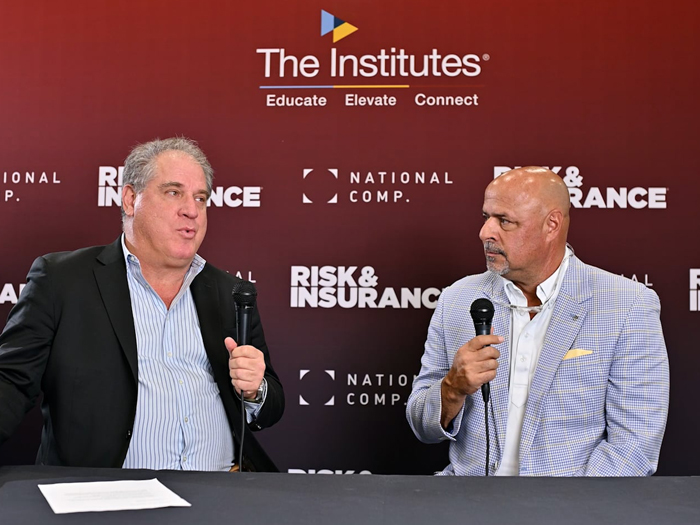Cyber Risks Are Pressing Concern of Risk Managers, Environmental Risks Are Long-Term Worry: Survey

Cyberattacks, geopolitical uncertainties, and climate change adaptation are among the top concerns for risk managers, according to the 2024 Global Risk Manager Survey by the Federation of European Risk Management Associations (FERMA) and PwC.
The survey also points to significant trends impacting the insurance market, including increased premiums and a reduction in natural catastrophe coverage, as well as a gradual shift in the demographics and organizational structure of risk management.
Conducted biennially since 2001-2002, this year’s survey for the first time expands beyond Europe to include responses from risk managers worldwide, providing a truly comprehensive picture of the perspectives and priorities of risk managers on a global scale.
“Risk managers recognize the increasing influence of economic shifts, geopolitical uncertainty, regulatory developments, and the changing risk environment on insurance market dynamics,” said Charlotte Hedemark, president of FERMA. “In response, they are advising organizations appropriately and taking considered and necessary actions to adapt their buying strategies and prevention activities, particularly given expectations of further market hardening.”
Key Risks and Trends
Looking out over the next 12 months, risk managers cited cyber-attacks, geopolitical uncertainties, uncertain economic growth, talent management, and data breach as their top five near-term concerns.
Projecting out to a three-year timeframe, the focus of risk managers shifts to regulation (32%), geopolitical uncertainty (31%), and the speed of technological change (30%) as the most critical risks.
And with an eye to top risk concerns over the next decade, risk managers are most concerned about environmental issues: climate change adaptation (35%), carbon neutrality transition (29%), and natural disasters (24%).
The survey revealed some risks that risk managers feel are not getting adequate attention. Among respondents, 43% pointed to artificial intelligence use as the most inadequately addressed risk, followed by geopolitical uncertainty at 27%, climate-change adaptation at 22%, and talent management at 21%. Notably, cyber-attacks, which were viewed as the second-highest risk lacking adequate consideration in the 2022 survey, dropped to 10th position in 2024.
As the risk landscape grows more complex, risk managers are taking on a more expansive role in their organizations. A full 91% report being involved in corporate strategy development, holding steady from 2022 levels. Risk managers are also increasingly responsible for key activities such as defining risk appetite, aligning risk management with strategy, risk quantification, enterprise risk management (ERM) governance and training.
The survey also found risk managers taking on greater responsibility for environmental, social and governance (ESG)-related risks, with 57% playing a role in this area in 2024, up significantly from just 35% in 2022.
Challenges and Opportunities
The past 12 months have seen significant trends impacting the insurance market, according to the survey. The top challenges reported by insurance managers include an increase in premiums, exclusions for specific risks, and a lack of innovative insurance solutions. Notably, 42% of insurance managers observed a reduction in natural catastrophe coverage, the most affected policy area in the study.
Looking ahead, concerns about insurability are growing. Over half, 53%, of risk managers believe that some risks, activities, or locations will become uninsurable in the near future, up from 41% in 2022.
The risks cited as most likely to become uninsurable were climate change physical risks and natural disasters (73%), cyber-attacks (55%) and supply chain disruption (including raw materials) (34%).
In response, 54% of risk managers indicated they are changing their insurance buying patterns, including reviewing coverage needs, limits and sublimits. Also, 44% reported strengthening loss prevention efforts, while 30% are negotiating long term agreements and 28% reported setting up or making additional use of captive insurers.
“The fact that over half of respondents believe that critical business risks and regions may become uninsurable is of significant importance,” said Typhaine Beaupérin, CEO of FERMA. “It is imperative that in an expanding and more volatile risk context, insurance remains a core component of organizations’ risk management strategies. Our results, however, demonstrate that risk manager concerns are focused on many exposures that companies have traditionally relied upon insurance markets to cover.”
Evolving Demographics of Risk Management
The risk management profession is undergoing a gradual shift in its demographics and organizational structure, the survey showed.
One notable trend is the increasing gender diversity among risk managers, particularly in younger age groups. Overall, 36% of risk managers are women in 2024, a slight uptick from 32% in 2022. However, among risk managers between 31-35 years old, a significant 63% are female, indicating a growing pipeline of women entering the field.
The survey also reveals that the majority of risk managers bring a wealth of experience to their roles. More than half (53%) have 10 or more years of experience, while 17% have 7-10 years and another 17% have 4-6 years under their belts.
In terms of organizational structure, there has been a notable shift in risk managers who are dedicated to Enterprise Risk Management (ERM) activities, as opposed to those focused on Insurance Management. ERM profiles increased by 12 percentage points to 46% of respondents compared to previous years, while IM profiles saw a significant 17 percentage point decrease to 23% of respondents. The survey reported 31% perform both ERM and IM activities.
Risk managers also report to a diverse range of leadership roles within their organizations. The most common reporting lines are to the Chief Financial Officer (26%), the Board (21%), and the Chief Executive Officer (21%). Interestingly, 3% of risk managers now report to the Chief Strategy Officer, highlighting the increasing strategic importance of the risk management function.
Obtain the full survey here. &










